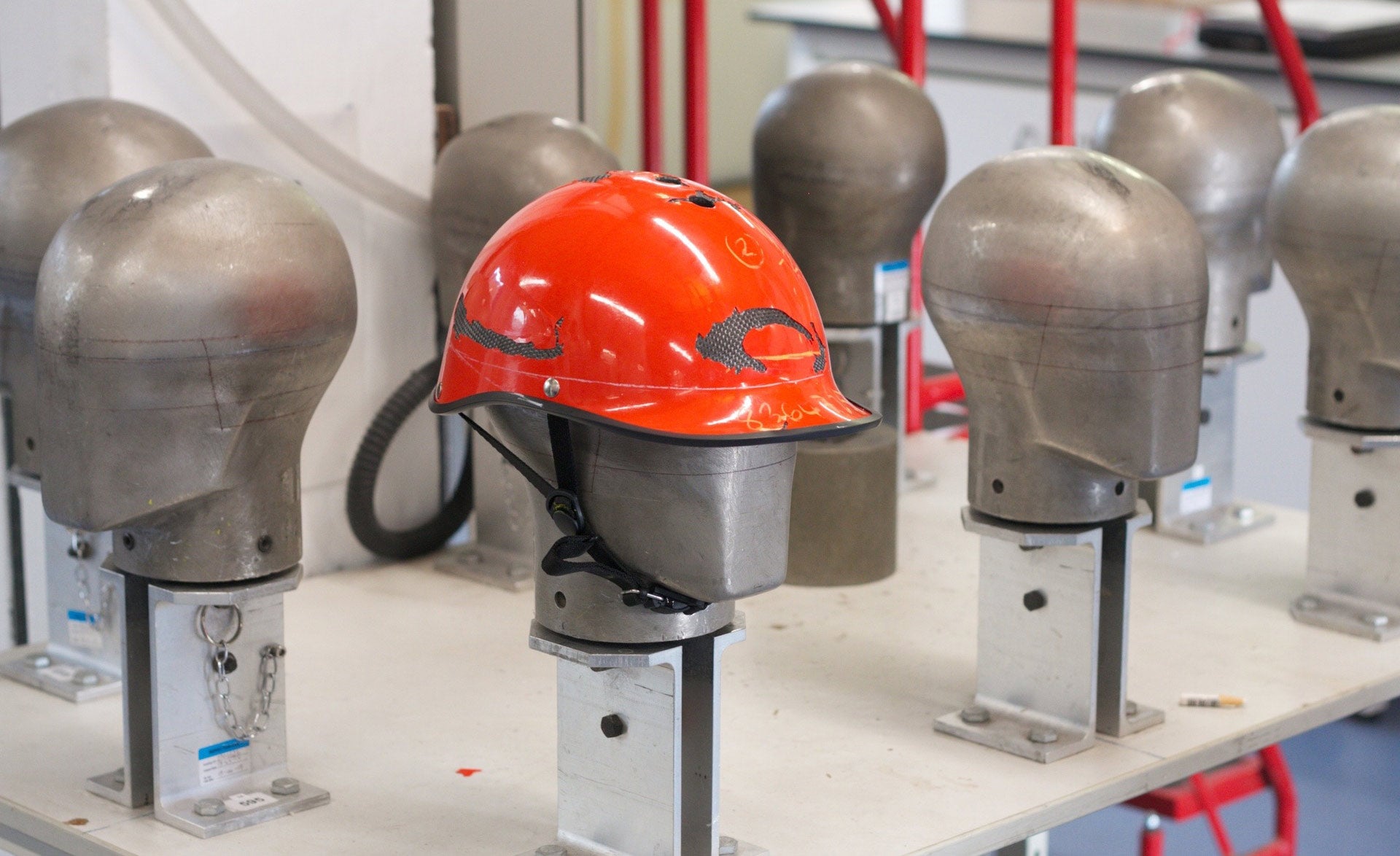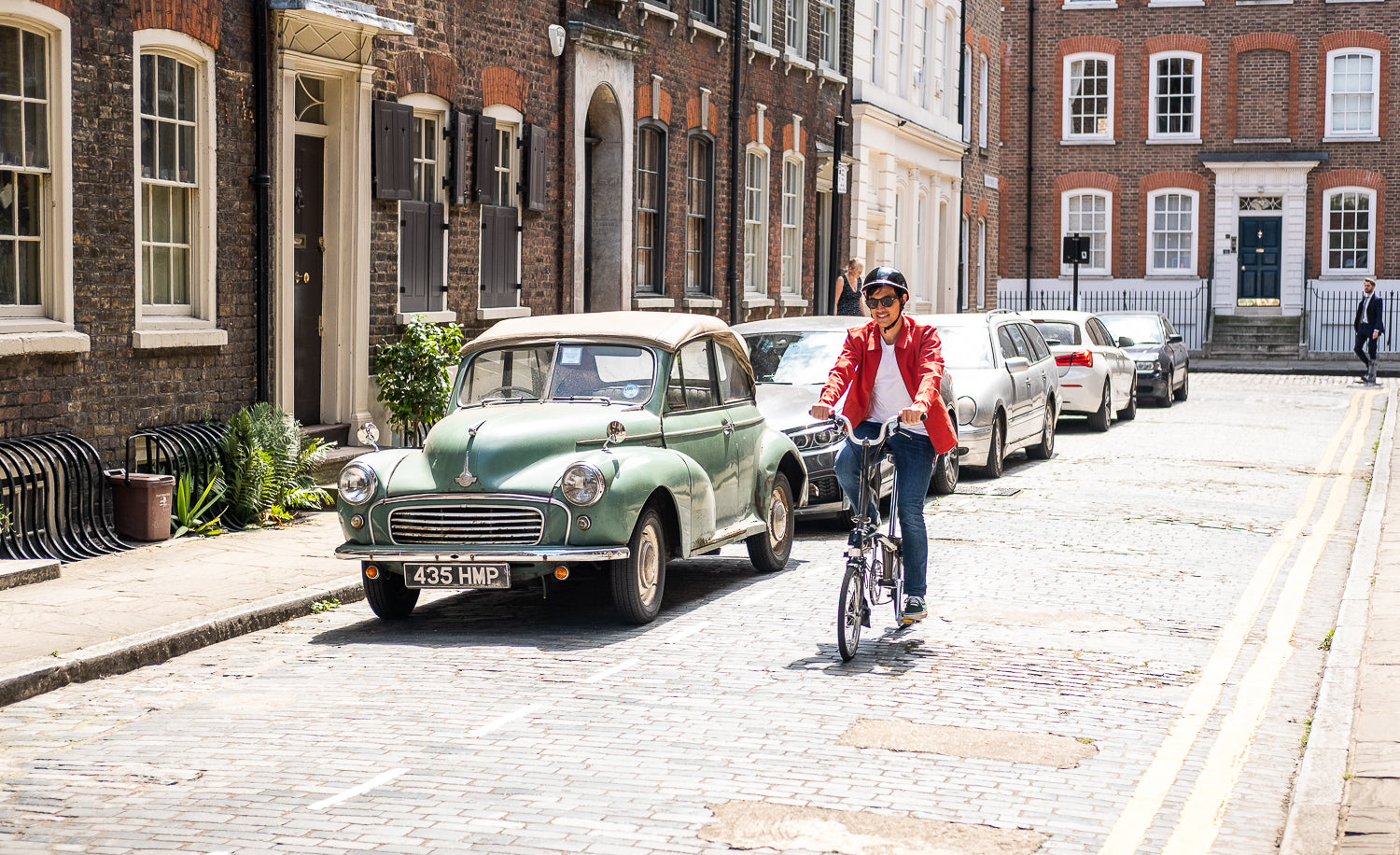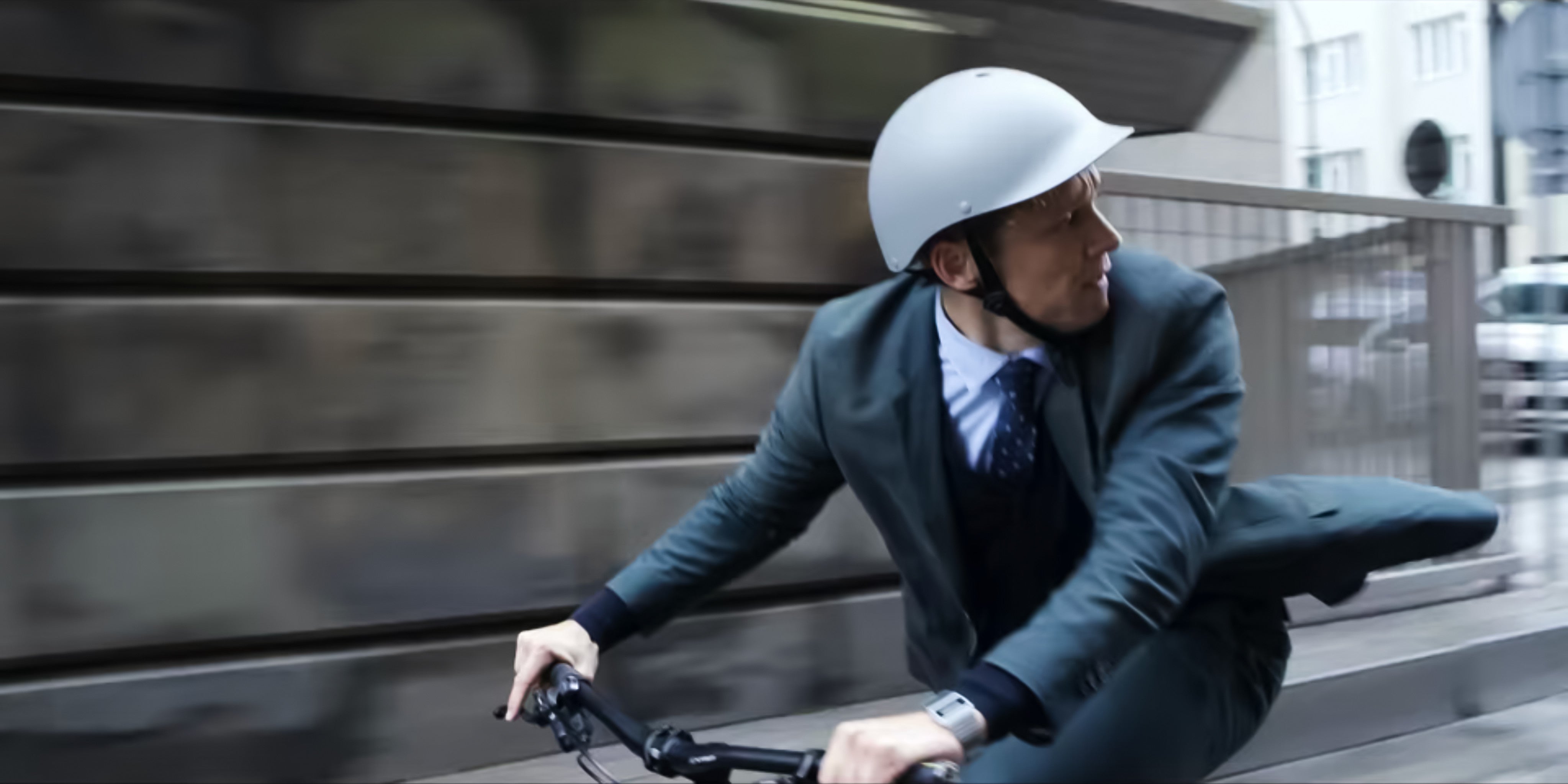Can helmets look good and be safe?

What safety testing has your Dashel helmet had?
There’s a lot of misinformation out there about cycling helmet testing, so it’s no wonder that even journalists from respected cycling publications sometimes get it wrong.
The testing standards are not readily accessible due to copyright protection and a cost of £200 to access. So without infringing upon these rights, we’re going to explain precisely what passing CE EN1078 (the European safety standard) entails.
How is a bike helmet tested for its safety?
Bicycle helmets are crash-tested in many ways and in many places.
The bike helmets are secured via their harnesses onto a metal head form with sensors inside. This form measures the level of g (gravitational-force) the head registers in a crash (1g being equal to the force of gravity, with 250g or above failing European tests).
This head form is suspended from an apparatus via a pulley that pulls to varying heights, then drops in a guided freefall to replicate crashes in different conditions and at different speeds.
The crashes show how the helmet performs when it hits a road or more angled object, i.e. a roadside kerb or a step. Therefore, there are two different metal anvils that the helmets are dropped onto: a flat anvil and a kerbed anvil.
Which areas of the helmets are crashed?
A bike helmet needs to give protection to the forehead, rear, sides, temples and crown of the head, so during various tests the helmet is crashed on the front, back, sides and top. It is likely that you will cycle in hot and cold weather, so cycle helmets are tested at temperature extremes: in the cold, frozen for hours at under -20°C and in the heat after being "cooked" for hours at over 50°C. Then there are further conditioned tests by crashing the helmets after artificial ageing through exposure to UV light and water.
In addition, the harness is rigorously tested to make sure that a helmet does not easily slide off the head and that the strap and buckles will not fail under load.
How do the test houses measure the results?
The helmet has a headform inside, equipped with sensors that show what g the head receives during impact. If 250g is recorded during any part of the testing, then this is deemed a fail.
The level of impact that causes a concussion is still unknown to the medical world as there is no way to safely test what stresses the brain can take without damaging it, so all impacts must be below 250g to pass.
You may hear brands talking about how their helmets have "exceeded the safety regulations". Every cycle helmet brand has had to get well below 250g in order to pass these safety tests.
In the UK test houses we use to certify our range of urban and carbon fibre cycle helmets, even 245g would fail the safety standards. This additional threshold allows for any tolerances and anomalies that could occur during testing.

Why no MIPS?
The current helmet testing does not test for rotational impacts that can cause the twisting of the head and neck. Dashel's smooth, rounded shape and light weight mean there is little resistance when you fall, so you glide to a halt. A heavy helmet could mean your head would take longer to slow down and stop twisting - the flywheel effect. MIPS is a technology that counteracts this and decreases the risk of rotational injuries. Particularly popular in road racing and mountain biking, helmets with MIPS also feature increased ventilation for higher intensity sport, and this often results in helmet designs with less rounded shapes.
With Dashel's round form and vents, it would seem that adding MIPS would not improve our safety results by a significant amount, which is why we have not added it to our construction.
MIPS once ran a campaign in the cycle helmet industry to commit to 185g or fewer in safety tests. Our own line of helmets comes in under this benchmark, with an average result of 173g.
Head coverage
Why doesn't the Dashel helmet design cover more of the skull at the back?
We have designed our helmet for an urban commute, and there is data on the average fall for commuter cyclists.
Imagine what happens when you fall backwards. Try tilting your head right back—can you feel how the base of your skull bends towards your shoulders? We did not want to create a helmet that would subsequently hit the top of the spine in such a fall.
Different sports and different modes of transport need tailored levels of head and neck coverage. Our urban cycle helmet is designed for commuter use, and not intended for snowboarding, ski jumping, or motorbiking.
Fit and comfort
No helmet can protect you if it is poorly fitting or the straps aren't fastened correctly. It will move about in a crash.
It’s essential to ensure your helmet is secured properly, with the straps sitting with the ‘Y’ shape adjusted to sit just below the ears.
When fitting a helmet, place the helmet on your head, pushing it down and ensuring it sits level 1-2 centimetres above your eyebrows.
Move the helmet if needed to make sure it doesn't tilt too far backwards or forwards. It should feel snug but not too tight. All of our helmets arrive with a set of narrow and thicker adjustable pads so you can tailor the fit to suit your size and head shape.
The magnetic Fidlock® clasp on the long strap should sit underneath the chin, not the jawbone.
Check the gap in between your chin and the strap; you should not be able to fit more than one finger in between.
Watch our video to get the perfect fit:
Overall: cycling is safe
Inactivity is a leading cause of cancer and heart disease, so the pros to your health through regular cycling vastly outweigh the cons.
If helmet hair is stopping you from wearing a cycling helmet, try our washable silver or black Coolmax pads. You might be pleasantly surprised!



